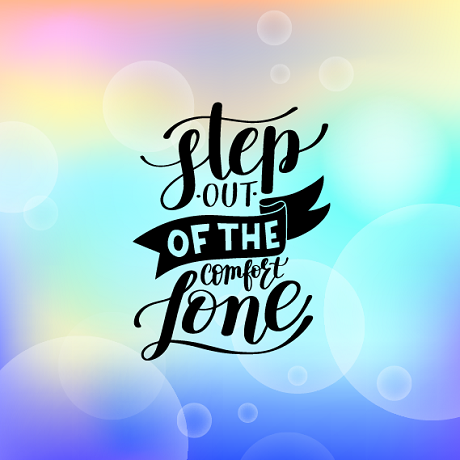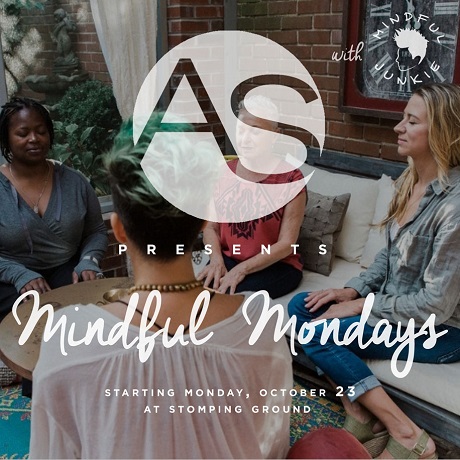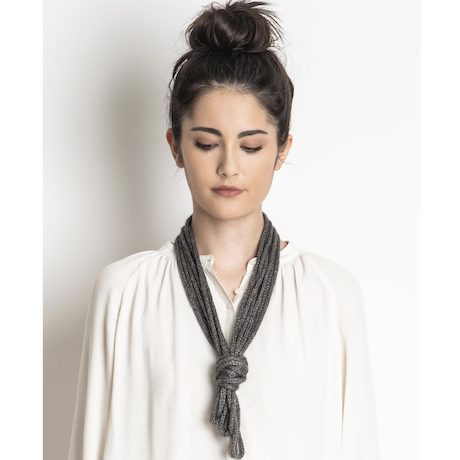Is Your Comfort Zone Big Enough?

Leonardo da Vinci wrote, “it had long since come to my attention that people of accomplishment rarely sat back and let things happen to them. They went out and happened to things.” In other words, waiting for something to happen might not get you the results you were hoping for. More often than not, in order to “happen to things,” active participation in the process is required. Instead of waiting around for what you already have to make you happy, for example, a better choice may be to proactively go out and find something new and different to add to the equation. You must purposefully create more opportunities that can be added to your “this makes me happy” bucket. But to do this, sometimes you have to move out of your own way by stepping outside your comfort zone.

What is a Comfort Zone?
For this concept, we will say that our comfort levels fall into three different categories or zones:
1) Comfort Zone: what we are completely comfortable with
2) Challenge Zone: what we will do, but doing so causes a level of stress or anxiety
3) Risky Zone: what we typically would never try, and may even have negative repercussions
In general, the Comfort Zone includes all items that make us happy (unfortunately it may also include things we think make us happy — like an entire chocolate cake — ha!). The Challenge Zone includes things that make us uncomfortable; we may well do them, but are reluctant and often times filled with anxiety. And the Risky Zone, which includes all the things that we may never, ever do, or that cause adverse effects.
How we fill these zones determines our level of comfort and happiness, as well as our level of discomfort and discontent. As you can imagine, if your Comfort Zone is overflowing, you will typically reside in a higher level of overall happiness. It’s like reaching into a cup of gold versus reaching into an entire treasure chest. They are both filled with pretty, shiny things, but a chest has a lot more from which to choose. If your Comfort Zone only includes Netflix, coffee, and sleeping, for instance, you only have three items that make you happy. By including more items, you begin to fill the treasure chest of happiness (totally cheesy, I know, but I think you get it.) So, more items in the Comfort Zone equate to more opportunities to be happy. Similarly, when the Challenge Zone is overflowing with things that we don’t like, the more access we have to unhappiness, i.e., the more opportunities we have to be uncomfortable or discontent.
It is only by purposefully pushing on our zones that we are able to move items from something that creates distress to something that embraces happiness. By limiting our interactions with life to only those that with which we are already comfortable, we are in essence decreasing our ability to be happy.
A small comfort zone = fewer opportunities to be happy
The good news is that these zones are malleable and can be increased and decreased by purposefully attending to change. But figuring out the zones can be challenging. Learning to become aware helps to notice and identify what resides in each zone. Here are few examples to get the brain juices flowing and help you reflect on your zones.
The Picky Eater
I know someone who is a picky eater. I’m sure you do, too. And what always happens when you go out to eat with a picky eater? More often than not they are disappointed at the lack of options for their particular palate. It was only by slowly and purposefully incorporating a variety of foods into his diet that we were able to find more food he liked (and really broaden his idea of what he liked). His comfort zone with food was initially very small but by trying new things, foods that were in his challenging zone moved into his comfort zone.
End result: Frustrating outings decreased, and meals became exciting with the challenge. Going out to a new restaurant became a joy!
The Tentative Surfer

I always wanted to surf, but was way too scared of the ocean / waves / sharks / and all other scary ocean things. Surfing was in my Risky Zone; I would literally have an anxiety attack thinking about going in the ocean. I eventually forced myself to try surfing (with an instructor, of course) and after about 50 lessons (JK – it was more like 49) surfing moved from my Risky Zone into my Challenge Zone. Then it changed a bit. I could surf, but only with my instructor. NO WAY would I think about surfing on my own. Slowly, over time and by practicing being comfortable with my instructor, the concept of surfing moved to my Comfort Zone and I was finally able to surf on my own (Yay me! But please don’t think this means I can actually surf. I’m still working on that part!).
End result: I have a new activity that I look forward to and makes me happy.
The Fearful Public Speaker
Raise your hand if you dislike to speak in public (assume I can see you, ha!). About three-quarters of you are indeed fearful. And of those, most of you will refuse to ever do it (Risky Zone). Others will do it, but begrudgingly (Challenge Zone). One of my great friends has a job where she must speak publicly at conferences multiple times a year, and she hates it. Strangely though, she is really good at it! She has spoken now more than a hundred times, still gets sweaty palms and increased heart rate, but she can do it. And each time she does, it gets a little less scary. While it has not moved completely to her Comfort Zone, public speaking has slowly moved further away from Risky Zone, which means further away from anxiety, stress, and discomfort.
End result: Her job causes her less stress and she is becoming more comfortable doing her work.
How do we expand or decrease our zones?

So how do zones change? How do we increase the Comfort Zone or decrease the Challenge Zone? It’s the struggle…no two ways about it. What we don’t realize, what no one has told us, is that the actual struggle is what builds our resilience and informs our views and comfort levels. It’s all about trying something new, noticing when you have discomfort, then pushing through it. And when you push through it, struggling just a bit, you slowly come to realize that you can do it. You may have fallen, but you got up, again and again. It looks like “Yep, I did it. It kinda sucked, but I did it,” or it may look like “well, that wasn’t so hard.” It could also be “that was so horrible I will never do it again,” in which case it may just stay in the Risky Zone. Whichever it is, it is progress towards identifying new levels of comfort and the gradual movement between zones.
Identifying and noticing zones can be difficult. One way to work through this process is with Mindfulness meditation training. One of the main teachings of Mindfulness is “awareness,” or noticing thoughts and sensations as they occur, and then welcoming what unfolds. This training during the actual meditation has proven to inform our post-meditation mind. When not meditating, first notice and acknowledge where you are (what zone, for example) and then welcome the struggle. Notice the healthy things that make you happy and expand on them, purposefully choose to challenge yourself and do something that makes you little uncomfortable, and repeat over and over again. Purposefully pulling items from the Challenge Zone over to the Comfort Zone decreases suffering and increases overall well-being.
Mindfulness Application
Mindfulness meditation is also about purposefully attending to the breath (meaning, noticing the breath moving in and out, “inhale, exhale, inhale, exhale”), and then purposefully noticing every time the mind starts to wander. The moment of awareness, “uh oh, I’m thinking,” is followed by a gentle reminder to breathe, “breathe in, breathe out.” In essence, while meditating, a wandering mind is a good thing, as it gives you a chance to train awareness.
Yes, that’s right, you want your mind to wander while you are meditating…which is confusing, right? You thought we were supposed to just empty your mind. Nope. You want to notice thoughts as they occur. When a thought happens, and you notice it, that’s when the teaching starts, when the learning begins. And we end up right back at the struggle. It’s the actual struggle with distraction, and coming back to the present moment, that is the teaching. So whether you are distracted by a thought or distracted by a challenge, the lesson is to notice, try again, and notice, try again, and slowly, gradually find your treasure trove of happiness.
Meditation
Try and meditate 🙂 Set a timer on your phone or watch and plan to meditate for 5 or 10 or 20 minutes. (Pro tip: make sure your timer signal ends with a gentle chime or noise that isn’t jarring. Nothing like ending a meditation with a gigantic ALARM that scares the crap out you.) This meditation is going to focus specifically on intentionally noticing your thoughts. The goal is to actually identify 1) when an thought occurs, 2) apply a label of Pleasant, Unpleasant, or Neutral, and 3) after label identification, gently remind yourself to breathe (even saying in your mind “breathe in, breathe out, breathe in, breathe out.”) Repeat over and over again until your timer chimes.
Post meditation work
After your meditation, think about what was happening during meditation. Did you feel tense, comfortable, tired, happy? I did this meditation right before I wrote this piece and was struck by how many unpleasant thoughts I noticed. Was I having a lot of negative thoughts, or was I only noticing the negative ones? Whichever it was, the important part was that I was purposefully noticing what was occurring. The work while meditating translates to post-meditation action. When not meditating, try to tap into the feeling of noticing. When you have thoughts throughout the day, see if you can label them. “Is this comfortable? Am I doing something unpleasant? Am I neutral right now?” Begin to notice what your comfort zones look like. “Am I not doing something because it’s in the Challenging Zone?” Become aware of what makes you happy or uncomfortable. Take a chance, switch it up and see if you can increase your happiness, one challenge at time. And don’t judge yourself. Just notice, take a breath, and try again. After all, as da Vinci noted, people of accomplishment rarely sit back and let things happen to them. They go out and happen to things.
More homework: Take 10 minutes and fill in your circles…
Comfort Zone: binge watching shows, eating popcorn, not leaving house after 6pm, meditating for 20 minutes.
Challenge Zone: dinner with friends during the week, writing a blog, shopping, confronting a family member regarding past issue, meditating for 1 hour.
Risk Zone: sky diving (it ain’t gonna happen)
- About the organization
Mindful Junkie, founded by Gina Rollo White, is based in Alexandria, VA, and offers training for the mind and the body. With an emphasis on teaching Mindfulness techniques, Mindful Junkie also teaches Pilates, connecting the circle of the mind and body relationship. Gina currently teaches mindfulness practices across a diverse set of people and environments, including youth, adolescents, adult one-on-one, classrooms, organizations, workshops and retreats.








1 Comment
Fantastic piece — inspiring me to think about my zones…